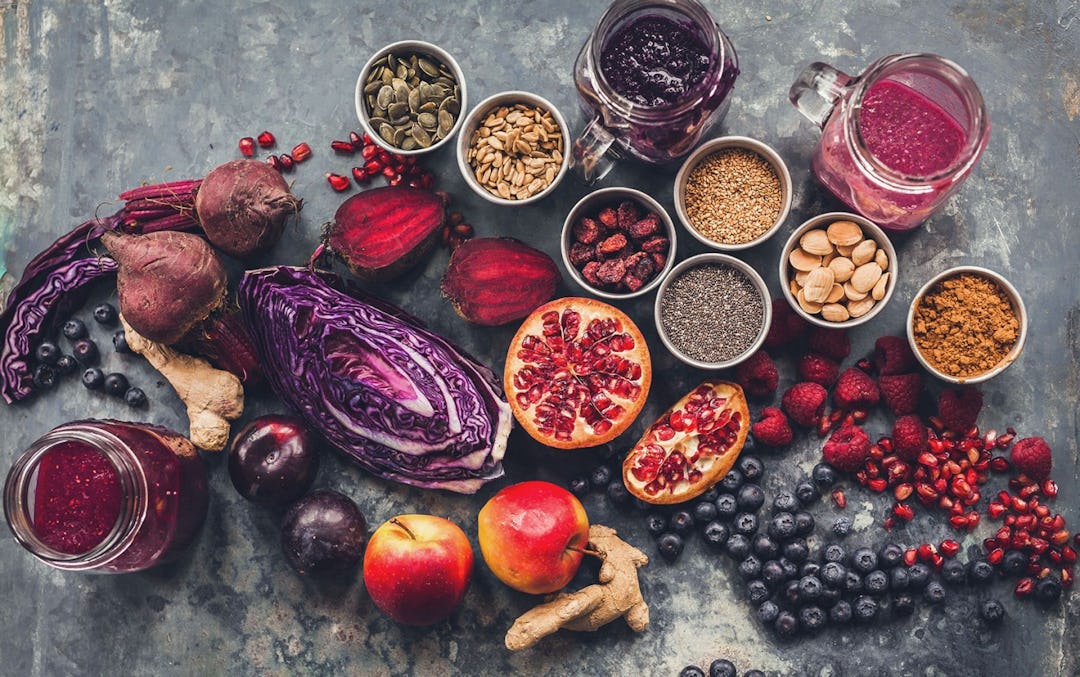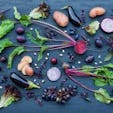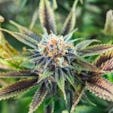Are antioxidant foods hurting your workout program? Maybe¦
Honestly, this was so important to me that I submerged myself in pubmed and moved clients around last week to get to the bottom of this. Except like many things, when you get to the bottom of the organic nerd happy meal there was no perfectly wrapped blue dinosaur to show all your nerd friends.
As you exercise and contract your muscles you fire up mitochondria and even healthy mitochondria run hot, leaking out reactive oxygen species (ROS). Think of these like sparks from the fire that if not quenched could put a hole in your brand new t-shirt or lulu pants. When you exercise you are revving up the fire.
More sparks and the potential for more holes in your nickers. Intense exercise also upregulates nitric oxide production by 600% which can further produce reactive nitrogen species. The pump is real.
These free radicals (such as: superoxide, hydroxyl radical, and peroxynitrite) are controlled by antioxidant systems and when these systems can’t cope with the amount of free radicals produced these free radicals scavenge for electrons from proteins, cell membranes, and DNA. Bad. Many diseases and aging are related to unchecked ROS production.
BUT, this upregulation of ROS by contracting muscle cells is also pivotal for many of the cell signaling processes that allow our body to adapt positively to an exercise stimulus i.e. increased mitochondrial biogenesis, angiogenesis, and muscle hypertrophy. AND reactive oxygen species also upregulate endogenous antioxidant capacity to cope with heat of the fire.
Furthermore, trained individuals have increased endogenous anti-oxidant production capacities. This paradox is huge for Functional Medicine and athletic performance. Why? Because nearly every multi-vitamin out there is swarming with high amounts of vitamin A, vitamin C, vitamin E, and many other antioxidants.
Also, many Functional Medicine practitioners (myself included) commonly recommend fairly high doses of specific antioxidants like resveratrol and astaxanthin, among others. We also ask our clients to eat a nutrient-dense diet and fill the gaps with whole foods supplementation that again have a lot of antioxidants.
I Thought Antioxidant Foods Are Healthy?
Reactive oxygen species run under a situational Goldilocks paradigm. Just enough at the right times for the right reasons and uncheck ROS production is no bueno.
“The chronic exposure to high levels of ROS is associated with the development and/or progression of pathophysiological processes, and implicated in an increasing number of human diseases, such as cardiovascular, metabolic, inflammatory and neurogenerative diseases, cancer as well as muscle atrophy and the ageing process.”
-Neubuarer et al.
“A pro-oxidant shift in redox homeostasis has been observed in several pathological diseases such as diabetes, cancer, rheumatoid arthritis and ageing.”
-Bentley et al.
That is as the body loses its ability to cope with free radical stress it gets sick and antioxidant foods have been found to help in these situation by restoring balance and down regulating inflammation, preventing DNA damage, and lipid peroxidation.
But, remember athletes and chronic disease states are very different and we can’t automatically think that was is good for the goose is good for the gander. We also don’t want to down regulate an immune response at times with the body is using reactive oxygen species to say fight a pathogen.
So again we have to stay away from black and white and live in the gray.
With that let’s take a look at all the research to date on exercise and vitamin C, which is the most studied antioxidant in terms of its role in exercise physiology.
Overview of Antioxidant Foods Supplementation in Exercise Training
In the table you can see there are some positive studies (highlighted in green) and some negative studies (highlighted in red) and some that show no effect. You can also see that most of these are endurance based studies.
Thus, we have some findings that show mechanistic potential towards a detriment in exercise adaptation primarily in regards to endurance based training.
Yet, even in those studies with detrimental findings in endurance world, we don’t see any real differences in performance measures and some other antioxidant foods even show benefit at holding off fatigue and performance.
Now let’s hit some quotes
“It is clear considering the positive and negative effects of free radicals, and that the right balance between these and antioxidants is necessary for health and optimal training effectiveness. For the time being, identifying the optimal balance remains elusive, making the area of free radicals, antioxidants and training, especially in athletes, a ripe one for further research.”
– Micah Gross and Oliver Baum.
“Antioxidant supplements are widely used in many sport fields, even though some of them are probably ineffective. There is insufficient evidence to recommend antioxidant supplements for exercising individuals who consume the recommended amounts of dietary antioxidants through food because of the contradictory findings. During the antioxidant supplementation, exercising individuals consider that not only type, but also dosage and duration of the supplement is important for effective prevention. However, further studies are needed to clarify the interactive effects of exercise training and
antioxidant supplementation.”
– Muaz Belviranli and Nilsel Okudan.
“The current literature is not sufficient to determine definitive recommendations concerning antioxidant requirements for athletes and exercising individuals. However, based on available data, it is feasible to suggest that these requirements, particularly for vitamins C and E, might be in a range of â¥100–200% of the current recommendations for the general population¦ Additional research is warranted to define antioxidant requirements during exercise training, which should also take into account nutrigenomic issues. Finally, it is important to note that nutritional guidelines, in particular, for athletes need to be fine-tuned on an individual basis.”
– Oliver Neubauer and Christina Yfanti.
One more?
Ok!
“Chronic oxidative stress may then inhibit physiological adaptations to exercise and contribute to negative exercise physiological states including the development of overreaching and, in severe cases, overtraining. It is therefore important to control the production of free radicals within the body in order to maintain redox homeostasis and normal physiological function¦It is also likely that a dose-response effect could be evident, where the amount of antioxidants required to optimise oxidant content in the skeletal muscle is relative to the type and amount of exercise undertaken. This is yet to be fully investigated and should be a focus of future antioxidant research¦While not all studies have found positive results on exercise performance or adaptations, many investigations have demonstrated that antioxidant supplementation, particularly when combined as a ’cocktail’, can have an ergogenic effect on both high intensity endurance and resistance exercise performance.”
– Bentley et al.
WHAT THE!!!!
When I see all of these quotes and conclusions, it tells me one thing – “We don’t know yet.”
I spent 10+ hours making 30+ pages of notes to tell you that the research isn’t clear and we barely have anything on resistance training and what we do have is somewhat positive. Furthermore, we also have to think about publication biases.
There seems to be traction of late for this idea that antioxidant supplementation is deleterious so journals may be more apt to publish those findings instead of null findings. Then ten years from now they may be more apt to create controversy and publish positive findings. Just a thought.
I have skin in this game as I have taken extremely high doses of whole food antioxidants. I also eat more than a metric ton of vegetables a year. With all these exogenous antioxidants my muscle mass and body composition have improved over the last few years. And I feel annoyingly amazing with never more than half a cup of coffee a few days a week.
Clinically, I have seen time and again that if you give humans the nutrients they need at high doses they feel and perform better. Thus, right now I would say the positives way outweigh the potential negatives especially if you are one of those athletes who has never taken supplements and hates vegetables. Exercise upregulates everything.
You know all those wheels and arrows you drew in high school biology – athletes spin those cycles faster and that means they need more substrate, more cofactors, and protein to build enzymes. Quality food should be the backbone of how we get those items, but with the state of our food it may just be a good idea to make sure you are getting what you need.
This soil and micro-nutrient depletion, first world problem is extremely new and we are seeing cocoa puff fueled athletes, with a ton of work and psychological stress, not enough sleep, and a plethora of other lifestyle related factors that could be kneecapping their ability to adapt to exercise.
Do I think that greens powder fixes all of these issues. HELL NO. I think it is a drop in the bucket of the athlete’s experience and just one or many tools at their disposal. Yet, it could be a critical one for some and then as they become nutrient repleted they would likely need less and less.
What is the Goal of Supplementation

Exit strategy and pulsing? To get people off of these and replace it with less stress, more recovery, and high quality food. Then add it back in at times when they may need more help or aren’t willing to eat kidneys and oysters on a weekly basis.
Thus. I believe it could be a better idea that if you are going to run a Vitamin C cleanse or any kind of high vegetable and adequate protein detox with your athletes that you do it on a deload week. Yet, I do not think the evidence is there to throw out your multi or avoid pomegranates during a 4 week hypertrophy cycle.
When I get lost down a rabbit hole. I will always send one of these articles to one of my colleagues. They tend to throw down a rope and bring me back to the real world. This time I emailed Coach Davis, who has been mulling this issue over as well. Here was his response.
“I like the article and I will just give you a quick glance into my mindset on the issue. The biggest concern when it comes to oxidative stress, are people who don’t move. This is destructive ROS, which means less density of mitochondria – from lack of movement. So the mitochondria, like stars, increase in size before death. During that process respirations chains get larger and more inefficient (electrons have to travel longer distances). Then we see electrons being held up because the demand for ATP is low. Electrons begin to build up because the person still has to breathe and we see electrons leaking specifically at complex I. For a while our body deals with this by mitochondrial death. ROS doesn’t necessary damage the cell directly but the mitochondria it’s self – specifically their DNA. The mitochondria are smart and only replicate the undamaged mitochondria, but sooner or later as more damaged mitochondrial DNA accumulate and replication of mitochondria with mutataions ensues. The cells nucleus now takes charge. Calling on transcription factors like NRF-1 for damage control. NRF-1 helps build new healthy mitochondria, but creates an inflammatory condition. Now the cell is operating on high alert and is fragile to stress. If ROS is still ramped in cell the cell’s nucleus has to keep calling on NRF-1 to put out fires. Soon the body recognizes the situation and programs cell death. This is a big issue when it comes to metabolically active tissue – liver, brain, heart, and muscle. So in my mind we need to identify what oxidative stress is going on. If they are not moving? Then maybe we get them moving and hit them up with ALL the micronutrients, in an effort to build more mitochondria, as well as put out the fire. With athletes I am stuck in the middle. If you are not over trained and have a great diet, the maintenance supplements seem to be the answer. Now if the athlete is overtrained then its not because he has faulty mitochondria/respiratory chains and maybe an exhausted antioxidant system – if so then we need to help them up with high doses of micronutrients. Then settle them back in to a great diet, balanced training, with the maintenance supplements.”
Pure Gold.
So there you have it. It’s not a perfectly wrapped Bebop and Rocksteady, but it definitely cuts through the noise. Search out underlying causes of non-exercise or non-productive exercise related oxidative stress and eliminate them. Nail down the fundamentals.
Individualize your diet and supplemental programs. Use different strategies at different times based on training stress and the condition of the athlete. And have wicked smart friends to pull you out of the rabbit hole.


)





